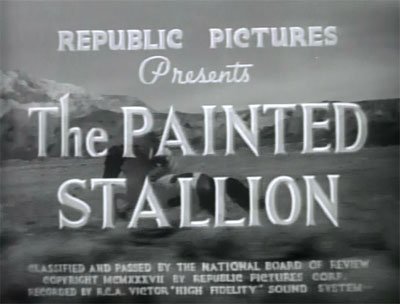
Republic, 12 Chapters, 1937. Starring Ray “Crash” Corrigan, Julia Thayer, Sammy McKim, LeRoy Mason, Hal Taliaferro, Hoot Gibson, Duncan Renaldo, Maston Williams, Jack Perrin.
In the early 1820s, Walter Jamison (Hoot Gibson) leads a wagon train to the isolated Mexican city of Santa Fe; accompanying him is Clark Stuart (Ray “Crash” Corrigan), who’s been assigned by US senator Thomas Hart Benton to establish a formal trade treaty with the new Mexican government. However, Alfredo Dupray (LeRoy Mason), the former governor of Santa Fe, has been secretly masterminding outlaw raids on trappers and traders in the wild territory surrounding the city, and has no intention of allowing either Mexican officials or American pioneers to force him to give up his gubernatorial powers and his criminal practices. Soon, Stuart, Jamison, and their fellow frontiersmen–among them the famous Jim Bowie (Hal Taliaferro) and a spunky young runaway named Kit Carson (Sammy McKim)–find themselves forced to fight Dupray’s henchmen every step of the way to Santa Fe; they’re aided in their battle by a mysterious figure known as The Rider of The Painted Stallion (Julia Thayer), who repeatedly uses her unique whistling arrows to aid Stuart and his friends at need.
The Painted Stallion draws its title from a Saturday Evening Post novelette by Hal G. Evarts, but its story (concocted by Morgan Cox and Ronald Davidson) and screenplay (the work of Winston Miller and Barry Shipman) have nothing in common with Evarts’ work. The serial’s basic plot setup is a good one, with the writers presenting a high-stakes struggle that can be believably carried on by a limited set of characters; said struggle does feel decidedly repetitive at times, but the serial’s narrative is structured in a way that downplays this repetitiveness: the storyline splits neatly into two distinct plotting segments, with a third segment serving as a bridge between them. Most of the first four chapters are devoted to the villains’ repeated attacks on Stuart and the wagon train, until the script shifts gears in Chapter Five and starts building towards the exposure of Dupray, who’s ultimately forced to flee from Santa Fe in Chapter Seven; the remaining episodes than center around Stuart’s efforts to track down Dupray and his gang (efforts that are believably linked to the treaty-signing mission), while Dupray endeavors to retake Santa Fe and exterminate his enemies.
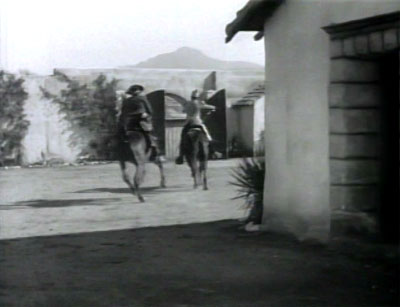
Above: Dupray and his henchman Zamorro flee Santa Fe at the serial’s halfway point.
The villains’ attempts to kill the Rider of the Painted Stallion, the hero’s efforts to protect her, and the Rider’s own interventions on the good guys’ side give an additional wrinkle to the duel between Stuart and Dupray–although the Rider never really comes alive as a character, serving instead as a remote deus ex machina for most of the serial; her backstory is revealed almost as an afterthought in the final chapter (it seems she was born to a settler family, orphaned by a Comanche massacre, raised by the Indians, and has devoted herself to preventing further frontier bloodshed). It would have been more dramatically interesting to depict her origin in an opening prologue sequence, and to make Dupray responsible for the death of her parents–thus lending additional emotional resonance to the final defeat of the villain. It would also have been interesting to see the Clark Stuart character interact more with the Rider, re-acclimatizing her to civilization while falling in love with her; the Chapter Four interlude in the Rider’s cave makes a step in this plotting direction, but the sequence is not really followed up until the fadeout (when Stuart rides off with the girl). Undoubtedly, the writers felt that such character development would only interfere with the action scenes–an attitude that would soon become a common one at Republic.
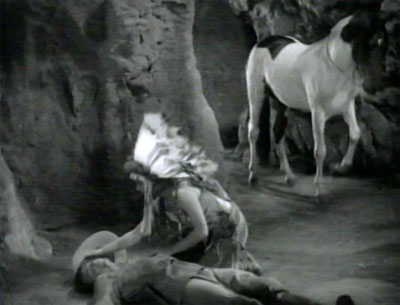
Above: The Rider (Julia Thayer) tends to the injured Clark Stuart (Ray Corrigan) in her cave.
However, said action scenes are consistently excellent, a huge improvement over the lackluster battles featured in Republic’s previous Western serial, The Vigilantes Are Coming. The serial’s several large-scale clashes between Stuart’s group and Dupray’s gang not only feature an impressive amount of extras (occasionally reinforced by stock footage), but are staged and shot in lively and exciting fashion; good guys and bad regularly get shot dead instead of merely ignoring the bullets, and charge, flee, or dodge through streets and canyons that are photographed at an interesting variety of angles. The big battle in Santa Fe in Chapter Nine–with Dupray making an all-out assault on the town, besieging the heroes in the new governor’s palace, and ultimately setting it afire–is a particular standout; the lengthy Chapter Ten shootout in the canyon is also terrific. The hillside battle that spans Chapters Eleven and Twelve is very good too, but is rather unconvincingly concluded–and is also jarringly disrupted by a needless sequence in which the Rider’s horse battles one of the heavies’ steeds (providing an excuse for a reprise of the overused black-horse-versus-paint-horse stock-footage fight seen in so many Mascot serials).
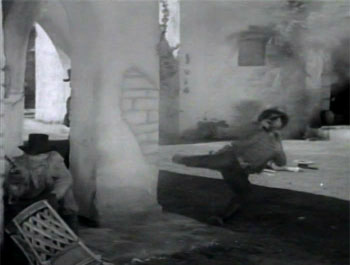
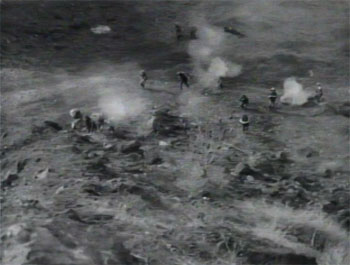
Above left: A heavy goes down during the battle in Santa Fe. Above right: Jamison’s men advance across open country during the climactic battle at Dupray’s canyon hideout.
Other action highlights include the cross-country horseback chase in Chapter One, the same episode’s big Indian attack sequence (partially stock footage), the shootout that accompanies Stuart’s rescue of the rider from a box canyon in Chapter Three, the brief cliff fight in Chapter Four, the short-lived but nicely-shot cantina fight in Chapter Five, the running battle between the wagon train and the outlaws in Chapter Six, and the rescue of the runaway stagecoach in Chapters Seven and Eight; this last sequence also serves as an episode-ending cliffhanger, and provides Yakima Canutt with a chance to perform his evergreen speciality stunt, the fall under the running team. Canutt, who doubles star Ray Corrigan throughout the serial, lends his talents to most of the other action scenes as well, backed by (among others) George DeNormand, Loren Riebe, and Duke Taylor.

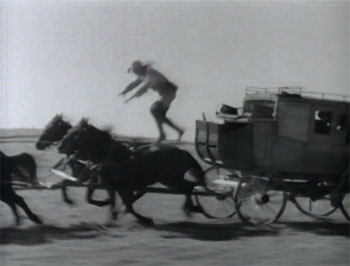
Above: Shots from the cantina fight (left) and the stagecoach-rescue sequence (right).
The well-done Chapter Three river-crossing/rainstorm sequence is also a noteworthy piece of action–and, like the stagecoach scene, serves as part of a chapter ending. Of the serial’s other cliffhangers, among the more memorable are the Chapter Four avalanche scene, the impromptu firing-squad sequence that closes Chapter Five, the nicely foreshadowed trapdoor cliffhanger of Chapter Eight, the convincing-looking fire scene at the end of Chapter Nine, and Chapter Eleven’s impressive landslide (which, like the earlier avalanche, is pulled off by means of the Lydecker brothers’ miniature work). These perils and others are fortunately resolved without any of the egregious cheats that plagued so many of Republic’s early serials–although the Chapter Six wagon-crash is muffed in another way, with the editors showing the hero’s escape before the cut to the “next week” card.
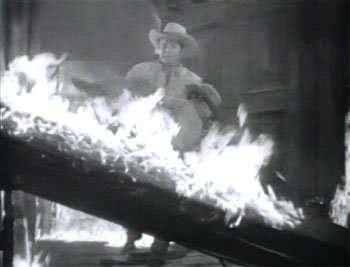
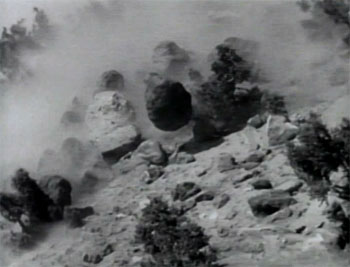
Above left: Carrying an unconscious Sammy McKim, Ray Corrigan is trapped by a burning beam at the end of Chapter Nine. Above right: A deadly avalanche sweeps downhill at the end of Chapter Eleven.
The action scenes and cliffhangers in Painted Stallion are additionally enhanced by the striking scenery that surrounds them–scenery that looks just like the untamed wilderness it’s supposed to be. While Kernville, Iverson’s, and the Republic backlot (especially the studio’s Spanish fort set) are used in some scenes, the bulk of the serial was shot in more unfamiliar territory–the imposingly deep and rocky canyons of St. George, Utah, and the similarly impressive rocky wastes of the Mecca, California area. As mentioned, this scenery is displayed to maximum advantage throughout, with cinematographers William Nobles and Edgar Lyons using innumerable overhead shots and long shots to emphasize the dizzying depth and height of various cliffs and gorges. Much of the serial’s location shooting was supervised by a new arrival on Republic’s directorial team, young William Witney–who was promoted from script supervisor to join Alan James as the serial’s co-director, replacing original co-director Ray Taylor (who was fired early during the making of the serial).
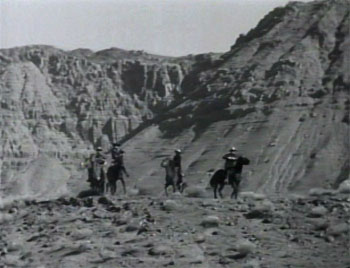
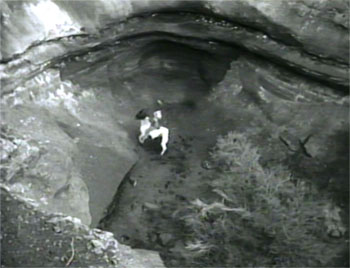
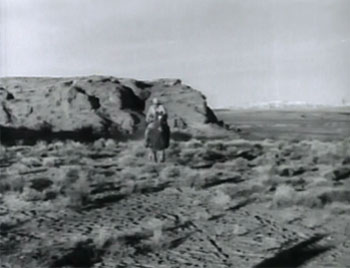

Above, top left: During a chase scene, the heavies clear a ridge in front of a towering canyon wall. Top right: The Rider is trapped in a dead-end canyon. Bottom left: Yakima Canutt (doubling Ray Corrigan) gallops towards the camera with some impressive vistas behind him. Bottom right: Ray Corrigan prepares to surprise Maston Williams, who’s planting explosives atop a dizzying cliff.
With two minor exceptions, the cast of Painted Stallion is a thoroughly capable one. Ray Corrigan, taking time off from Republic’s Three Mesquiteers B-western series, turns in a likably cheerful and ruggedly self-assured leading performance that’s much, much better than his stiffly uncomfortable turn in his earlier starring serial Undersea Kingdom. He’s relaxed and genial much of the time, but always retains an understated air of authoritativeness, and easily snaps into an aggressively forceful attitude when he has to confront the villains.
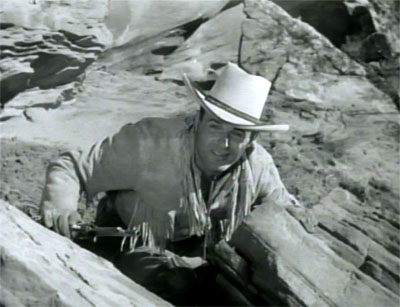
Above: Ray Corrigan in action.
As the Rider, Julia Thayer spends most of her screen time silently galloping around and firing arrows, occasionally getting to deliver a few lines of pseudo-Indian dialogue or broken English; however, her slender and graceful appearance and intently thoughtful expressions help her to make an impression despite the limited nature of her part (and despite the comically oversized Indian war-bonnet that’s she’s saddled with). Her fierce pinto steed–portrayed by a horse named Minister–gets a couple of good solo heroic bits, but her pet cougar is (rather disappointingly) seen in only one chapter.
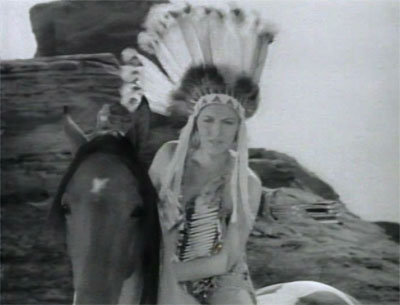
Above: Julia Thayer prepares to interfere with the villains.
Sammy McKim, always more down-to-earth in demeanor than other serial child actors, is perfectly cast as young Kit Carson; though he exhibits all the youthful enthusiasm and impetuousness of the typical kid sidekick, he also shows enough calmness and maturity to make it easy to believe that he’ll grow up to be a full-fledged frontier hero himself. Popular former Western star Hoot Gibson, who was paid an enormous sum for his participation in the serial, is frankly wasted as wagon-master Walter Jamison; he has little to do other than confer with the other good guys and periodically take part in gun battles, and is given almost no opportunity to display the quirky humor that was his trademark in his starring days. His best moment comes in Chapter Six, when he good-naturedly but cannily parleys with the glib Dupray and sees through the villain’s polite façade.
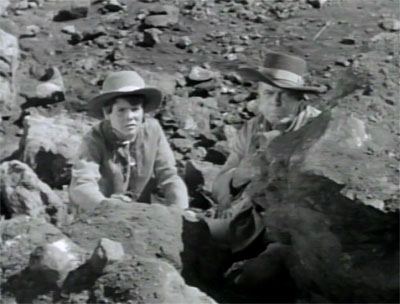
Above: Sammy McKim and Hoot Gibson.
Hal Taliaferro is a delight to watch in the assistant-hero role of Jim Bowie, whether he’s showing off his knife-throwing prowess with deadpan cheerfulness or drawling out wry remarks in the midst of shootouts; however, his performance, entertaining as it is, suggests Davy Crockett–an easygoing swashbuckler who deliberately cultivated a colorfully rustic image–and not Bowie, who was not only much more grim and fiery in personality, but who also aspired to membership in genteel society. Crockett himself, ironically, is present in the serial, first appearing in Chapter Five and taking part in plenty of action thereafter–but former leading man Jack Perrin plays him in such low-key fashion that he makes little impression, and remains a likable but forgettable background member of the good guys’ team. One wishes that Taliaferro and Perrin had simply switched character names; the friendly but solemn and taciturn Perrin could easily pass as Bowie at one of the less turbulent periods of his life, while Taliaferro’s laid-back swagger simply cries out “Crockett.”
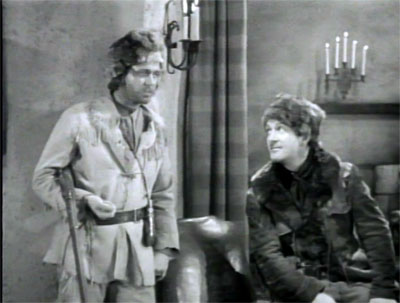
Above: Hal Taliaferro (left) and Jack Perrin.
LeRoy Mason turns in a strong villainous performance as Alfredo Dupray, even though his very American voice sometimes makes it hard to remember that his character is supposed to be Mexican. Mason is suave and diplomatic when playing the upright official for the heroes’ benefit, coldly arrogant when ordering his henchmen around, and at all times conveys a steely ruthlessness that makes him seem genuinely intimidating; the coolly decisive way in which he oversees the torture of the new Governor’s secretary in Chapter Eight is particularly sinister.
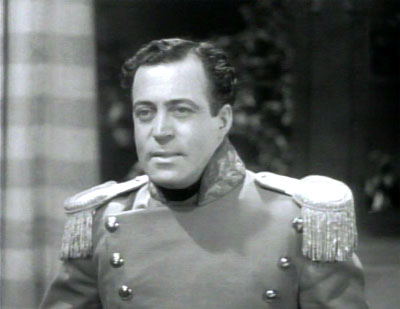
Above: LeRoy Mason feigns joviality while at the same time keeping a sharp eye on the off-camera behavior of the inquisitive Hal Taliaferro.
As Dupray’s lieutenant Zamorro, Duncan Renaldo divides henchman duties with several other actors, but makes the most of his role; his quick and nimble movements and his sleekly overconfident facial expressions give him a feline air that makes him seem both dangerous and occasionally amusing (as when he lights a cigar with an elegant flourish and accidentally allows Ray Corrigan to get the drop on him). As the wily outlaw Macklin, the drawling and unshaven Maston Williams has about as much screen time as Renaldo does, and delivers an excellent henchman performance; his crafty smirk and bullying snarl are both so effective that one wonders why he didn’t have a more substantial career as a serial and B-western heavy. Charles King, as henchman Bull Smith, is given some good opportunities to be bluntly thuggish in Stallion’s earlier chapters, but recedes into the background as the serial progresses.

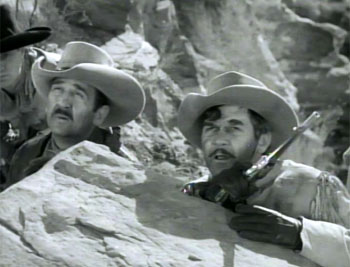
Above left: Duncan Renaldo exults at the seeming extermination of the good guys. Above right: Charles King (left foreground) and Maston Williams (right) plan to outmaneuver the offscreen Ray Corrigan.
Most of the serial’s minor outlaw roles are filled by stuntmen and wranglers, including Duke Taylor, Yakima Canutt, Loren Riebe, George DeNormand (who’s quite good in an extended bit as a traitor within the wagon train), and the improbably-named Vinegar Roan. Henry Hale is nicely shifty as another henchman who briefly impersonates the new Governor of Santa Fe; as the genuine Governor, Gordon DeMain does a good job of conveying dignity, caution, and robust determination. Paul Lopez is the Governor’s unfortunate secretary, Greg Whitespear plays LeRoy Mason’s sinister Indian servant, and Chief John Big Tree makes a brief appearance as a Comanche leader. Veteran supporting players Edward Peil, Lafe McKee, and Monte Montague all pop up briefly in the first chapter as–respectively–a marshal, a riverboat captain, and a knife-wielding thug.
Now we come to the “two minor exceptions” mentioned above–namely, the alleged comedy-relief team of Ed Platt and Lou Fulton, who play a couple of imbecilic pioneers named Oscar and Elmer and receive sporadic stand-alone “comic” scenes throughout the serial–several of them involving a recalcitrant donkey (actually a pony with a dubbed bray) that bedevils Fulton’s Elmer. Except for a mildly funny quip by Platt early in Chapter Two and Fulton’s amusing closing speech to the donkey, neither actor is given any actual jokes to deliver; Fulton’s outrageously exaggerated stammer and Platt’s slow, cartoonishly stupid-sounding delivery of his lines are apparently supposed to be funny in and of themselves–but they’re not. The duo’s annoying voices, Fulton’s overdone pratfalls, and the overstated “funny” music accompanying their antics prove tiresome almost immediately, and most viewers will find themselves wincing whenever Oscar and Elmer make one of their (fortunately infrequent) appearances.
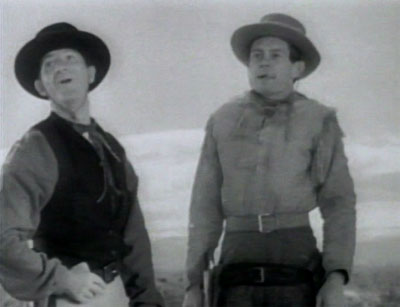
Above: Look on them with loathing; that’s Oscar (Ed Platt, left) and Elmer (Lou Fulton).
The rest of the serial’s music is much better than Oscar and Elmer’s accompanying theme; most of the score is stock music, but is uniformly well-suited to the action it accompanies. However, the driving and dramatic opening-credit music is original to the serial–and is the first chapterplay composition of William Lava, who’d go on to write several memorable scores for Republic’s serials (oddly enough, a different theme is used for the first-chapter credits). Stallion’s soundtrack also features an original Western song, “Wagon Train” (written by none other than Gene Autry and Smiley Burnette), which is incompletely heard during a campfire scene in Chapter One–and which sounds so good that one wishes it’d been played in full.
The Painted Stallion‘s plot is serviceable and its cast sturdy overall, but it’s the serial’s superb action, location work, and production values that really overcome its many minor flaws. It’s one of the few early Republic serials that genuinely works as a whole, and thus looks forward to the studio’s Golden Age–as well as being thoroughly enjoyable in its own right.
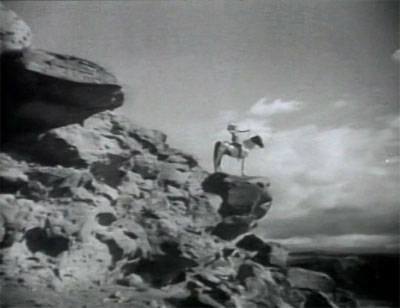
Above: The Rider sends a warning.
Acknowledgements: Jack Mathis’ exhaustive history of Republic serials, Valley of the Cliffhangers (Jack Mathis Advertising, 1975), provided me with a good deal of the background information for this review.
The real reason director Ray Taylor was fired was his heavy drinking. There is a story that the crew filmed him dead drunk, and it got back to the studio. William Witney was the film editor on Republic’s two previous serials, and was content with that job, agreed to fill in for a few days until the studio would send another director. After a couple of weeks, Witney asked where is the new director, and he was told that the studio was so happy with his work, that he was it. That is why in the credits, Witney and co-director Alan James’s names are larger than Taylor’s.
According to IMDB, Vinegar Roan was the actor’s real name. Imagine having to go to school with a name like Vinegar?
****1/2 out of *****–Top of the line “epic” serial western of the late thirties which is one of my very favorites. Top action and cast, the best cross-country horse races on film, the poetic touch of the rider with her whistling arrows, the great use of stock footage–this is a real winner for me. I disagree with Hoot Gibson. I thought he did a winning character turn. Oscar and Elmer did at least produce a funny last scene, and their tedious appearances were short. One really bizarre bit for me was the trapdoor in the outlaw hideout in a cave in the middle of nowhere, with a trapdoor which could be sprung by pulling a rope in the wall. How could such a thing be engineered in rock walls in the 1820’s, and why would anyone go to so much trouble? Still, that is one of the things that makes serials such weird fun for me.
Old, Fan, trap doors and death traps were extremely common in serials, and yes they made little sense when you think of it. There was a trap door in an apartment hallway in FEDERAL OPERATOR 99, Why in the world would you have that, other that sometimes in the future someone would need to fall into it. THE CRIMSON GHOST was chased by the hero, and runs into a building where he conveniently has a poison gas trap all set up. Or who would think to build a room where the walls would close in, crushing anyone who would stumble in there?
Other than in this post, I don’t question it, I just go along with it and suspend my belief. That is why i am such a big serial fan.
This is not a reply to this review. I am using this to ask if you have a favorite supplier, Amazon, serial squadron, serial bowl, movies unlimited, etc.. Also, favorite, least favorite distributors, Vci, ati, alpha, etc.. I enjoy your reviews very much. Thank you. Sean Cunningham
VCI is my favorite serial supplier; they have the best available prints of nearly all of the serials they carry. Their Universal serial releases, for example, are light-years better than the PD prints found all over the Internet (particularly their superb Green Hornet and Perils of Pauline). A few of the Serial Squadron releases–most notably The Phantom Empire and The Vanishing Legion–are marred by pointless tampering arising from Eric Stedman’s peculiar personal obsessions, and by his other obsession with removing soundtrack hiss (the removal causes voices to reverberate as if they’re in a giant bathtub, which to me is more distracting than the hiss); however, by and large The Serial Squadron is an excellent source too, particularly for some of the more hard-to-find 1930s serials. For example, they have the best prints available of The Red Rider, Great Adventures of Wild Bill Hickok, The Wolf Dog, Heroes of the West, and Secret of Treasure Island.
Grapevine Video also has some very good serial prints, as does Roan. Alpha is nowhere in VCI’s league, but they do have decent prints of some serials not offered by other sources. For “gray-market” purchases, I tend to use Red Circle Media on Ebay (their Ebay name is “onechapteraweek”). Unlike many Ebay sellers, they don’t cram their serials onto one disc, and the quality is much better as a result; they’re my favorite source for digital copies of most of the post-1940 Republic and Columbia chapterplays.
Hey! Great blog! I’m trying to track down a copy of the short novel “The Painted Stallion” by Hal G. Evarts but am not having any luck. As you mention it in your review, I was wondering if you have any suggestions that might help me to track a copy down? Thanks in advance, Marika
I don’t actually have a copy of the book version of Painted Stallion; the information about it in my review is derived second-hand from Jack Mathis’ Valley of the Cliffhangers book. However, I went to the Used Books section of Addall.com, my usual first stop for out-of-print books, and did a search on Stallion and Evarts. I turned up a bunch of copies; I don’t know if this link to the search will work, but here goes:
http://used.addall.com/SuperRare/submitRare.cgi?author=evarts&title=stallion&keyword=&isbn=&order=PRICE&ordering=ASC&binding=Any+Binding&min=&max=&exclude=&match=Y&dispCurr=USD&timeout=20&store=ABAA&store=Alibris&store=Abebooks&store=AbebooksAU&store=AbebooksDE&store=AbebooksFR&store=AbebooksUK&store=Amazon&store=AmazonCA&store=AmazonUK&store=AmazonDE&store=AmazonFR&store=Antiqbook&store=Biblio&store=BiblioUK&store=Bibliophile&store=Bibliopoly&store=Booksandcollectibles&store=ILAB&store=Half&store=Powells&store=ZVAB
The book only seems to be available in hardcover from English, French, and Canadian sources, for whatever reason.
Thanks so much for the quick response and the link. I shall check if any of those options ship to Australia! Cheers
Not sure how Jim Bowie & Davy Crockett end up heading to Sante Fe…never thought Davy got much farther west than San Antonio…Maybe Jim Bowie might have since he was in the area … plot is Ok ..Action is fine…Duncan Renaudo is a Villian …He must have reformed later as he became the Cisco Kid….Poncho would be ashamed of his Partner if he knew about this….Ok Serial but Bowie & Crockett don’t seem to Fit….Wonder if they were included because the Time this was made would have been the 100th Anniversary of the Battle of the Alamo….
Bowie and Crockett were probably written in because even someone with very little knowledge of American history had heard of them. keep in mind the high unemployment rate at the time and those that finished school were a small minority. most children were looking for any work to help their families. george burns, bob hope, jack benny, none finished higher than sixth-grade .kids had heard of Jim Bowie, Davy Crockett, and the Alamo. and those kids were the target audience.
Enjoyable and entertaining with good performances throughout. The character of the Rider is more than a little ridiculous, but I didn’t find her detrimental to my overall appreciation of the serial. As you mentioned, the only real drawbacks are the unfortunate inclusion of the “Oscar and Elmer” characters. Watching their imbecilic antics was sheer torture, and after a while, I just muted the sound to avoid being subjected to any more of their noise.
It has always amazed me that audiences of the 1930’s apparently found these types of portrayals amusing, along with the popularity of amiable drunks in so many films. I guess that you had live in that time to get the appeal, but it eludes me.